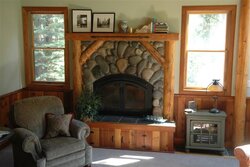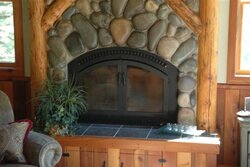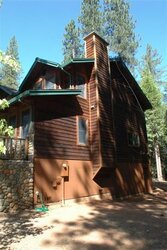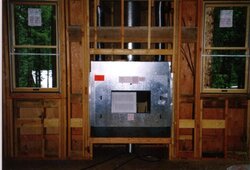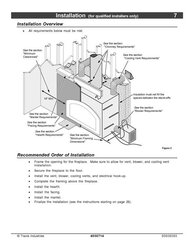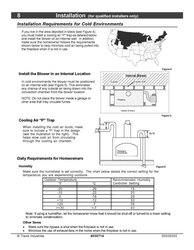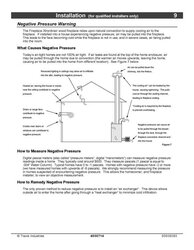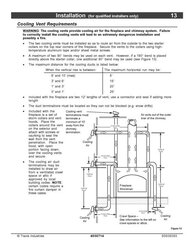Bob,
you've got some fine advice from some of the other folks here., not the least of which is to suspect negative pressure issues in the house itself and an uninsulated chase. At 4000 feet you're going to have more difficulty than most of us.
It will cost a lot of money to rip that unit out. You may be able to achieve acceptable results with other tactics.
I would start with moving the air inlet/fan casing to the interior of the house, in a properly ventilated area. See the manual. Also, check that the flap at the blower housing, where the blower housing attaches to the sheet-metal wall box, is not "pinched" closed. It is easy to accidentally pinch this flap and close off the air inlet. The fan can be accessed by removing the grill and filter from the outside. (Turn off the circuit breaker first).
Next, confirm that the chase is properly insulated. Many builders cheat on this, and some fireplace installers also. The entire chase should be insulated from under the unit up to the first firestop (typically 8 feet above the bottom). If the chase is not insulated you should remove the exterior siding and sheathing. Add in some nailer/furring strips to the inside edge of the verticle studs, add a barrier (sheetrock, sheetmetal, etc.) to keep the insulation from falling into the chase cavity, add the insulation (Use a good insulation board of high r-value. The same stuff used on the roof in log homes), then replace the sheathing and siding. (While open you can also caulk all the joints).
Finally, if that does not help, along with your attempts to control the negative pressure problems, add an "Exhausto" fan cap, properly designed for your chimney. (I think Exhausto advertises here on Hearthnet). Even after all this you should be under the cost to rip the unit out and replace it.
Pardon me now for proselitizing, but your situation illustrates the value of a good fireplace specialist getting involved before the fireplace is chosen and installed. Unfortunately, too many builders, and some home-owners, do not appreciate this value and do not want to pay for good advice up front that may save them lots of money down the road. The Fireplace Xtrordinair is a unique system, not even properly understood by many FPX dealers. If I were there to work with your builder I would not have recommended the FPX be installed in that house. If they insisted on an FPX I would have insisted on an interior location and I would have allowed for an Exhausto fan in the budget (Note: Travis would not support the "Exhausto" idea. It would be up to me and "Exhausto" to get the specs right). A Security BIS, or something similar, like an RFS, would have been preferrable. Something with a packed-insulated chimney system (not air-cooled) would have been a better choice.
Of course, the FPX dealer wants to make the sale, right? But now there is a shaking of the head and the dealer is out of the picture. He made the sale but he no longer has a customer. If he had more knowledge of where the fireplace was going and took more responsibility for it's installation maybe he ends up with a client for life. I know, it's hard. It' never as easy as I make it out to be. Yet, it can be done. It starts with knowing your limitations and being willing to confront the builders to do the same. A lot of these types of problems can be headed off if the dealers and builders would stop with the arogance and start with the respect. It will also help if the home-owners and buyers, will stop rushing. A couple of extra weeks could make all the difference. Did anyone sit down at the table and discuss the positives and negatives before choosing a fireplace? Did anyone share the blue prints with a fireplace specialist? Did anyone offer to pay the fair rates charged by the fireplace specialist to oversee the installation of this complex device? Or did they rather say it was "too much" and decide they could do it themselves?
I think the FPX wood fireplaces are a great product. But I have expressed my desire several times to Travis Industries that they design the fireplace to accept packed insulated chimney systems. So far, they only accept air-cooled systems, and for the forseeable future. This is one reason, even though we love the FPX products and feature them in our business, we discourage these wood models in our market area. We live in a cold weather environment, with lots of week-enders, and the air-cooled chimney systems are nothing but trouble. We place more BIS units in this category. Having a packed insulated chimney, especially when the fireplace is placed in an outside chase, makes all the difference for us. We have much less trouble with the BIS.
Good luck with your upgrades. I hope you can find some local professional help. There are good fireplace people all across this country. If you find one, please be willing to pay for his or her expertise. If these people can make a living at this we'll all be better off.
Sean


